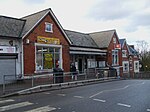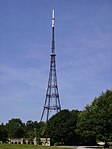Upper Norwood Library

Upper Norwood Library Hub is a community managed library in Upper Norwood, South London. It stands on Westow Hill, in Crystal Palace town centre, within the London Borough of Lambeth, but on the edge of the boundary with the London Borough of Croydon. It is funded by Croydon Council and Lambeth Council, but is not part of either borough's library services. Instead it has its own policies and procedures, and is managed by a Joint Committee of councillors, four from each borough. It also has its own membership procedures and circulation system, and does not accept Lambeth or Croydon library membership cards. It cannot accept or renew returned books or other items from Lambeth or Croydon libraries.
Excerpt from the Wikipedia article Upper Norwood Library (License: CC BY-SA 3.0, Authors, Images).Upper Norwood Library
Westow Hill, London Upper Norwood (London Borough of Croydon)
Geographical coordinates (GPS) Address Nearby Places Show on map
Geographical coordinates (GPS)
| Latitude | Longitude |
|---|---|
| N 51.4198 ° | E -0.0814 ° |
Address
Tattoo Society
Westow Hill 37
SE19 1SB London, Upper Norwood (London Borough of Croydon)
England, United Kingdom
Open on Google Maps











